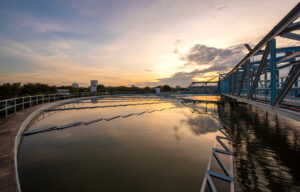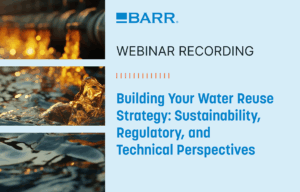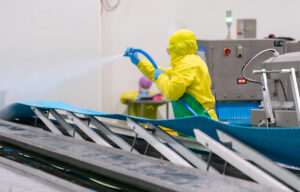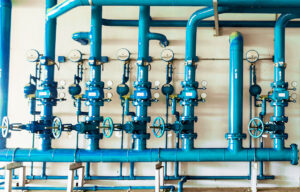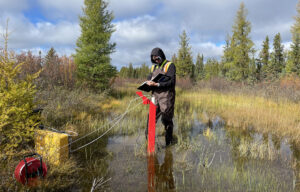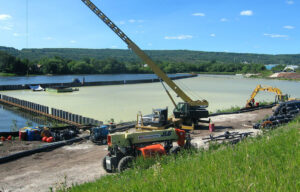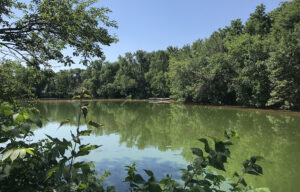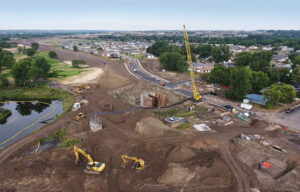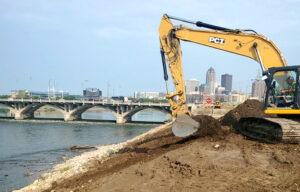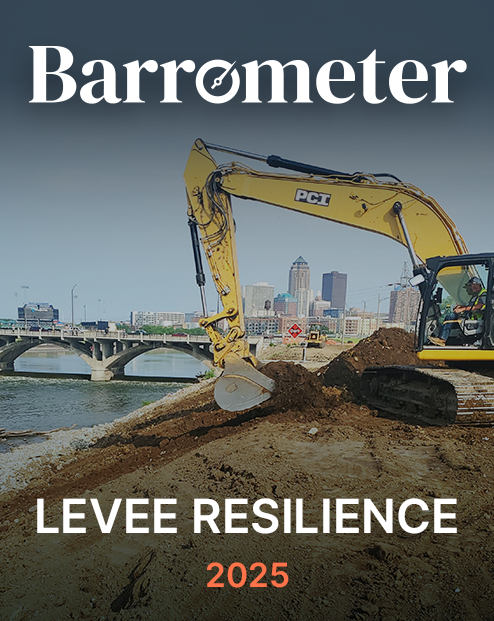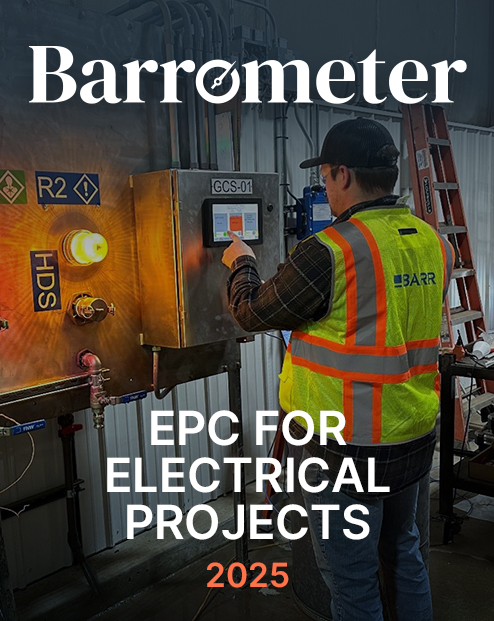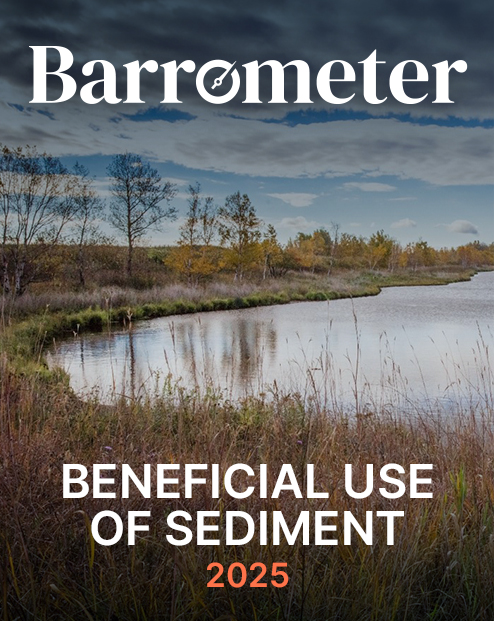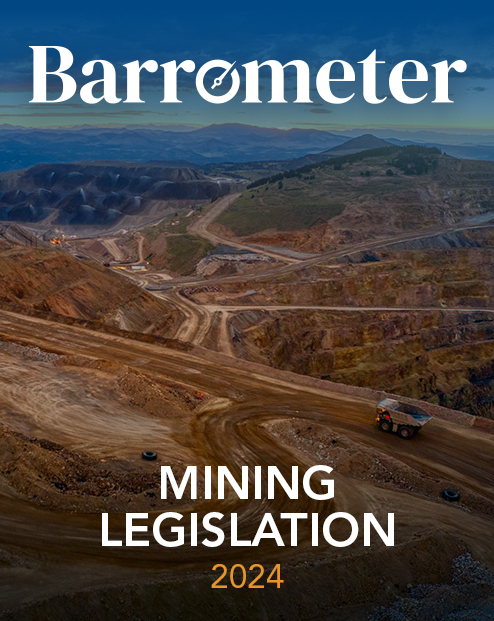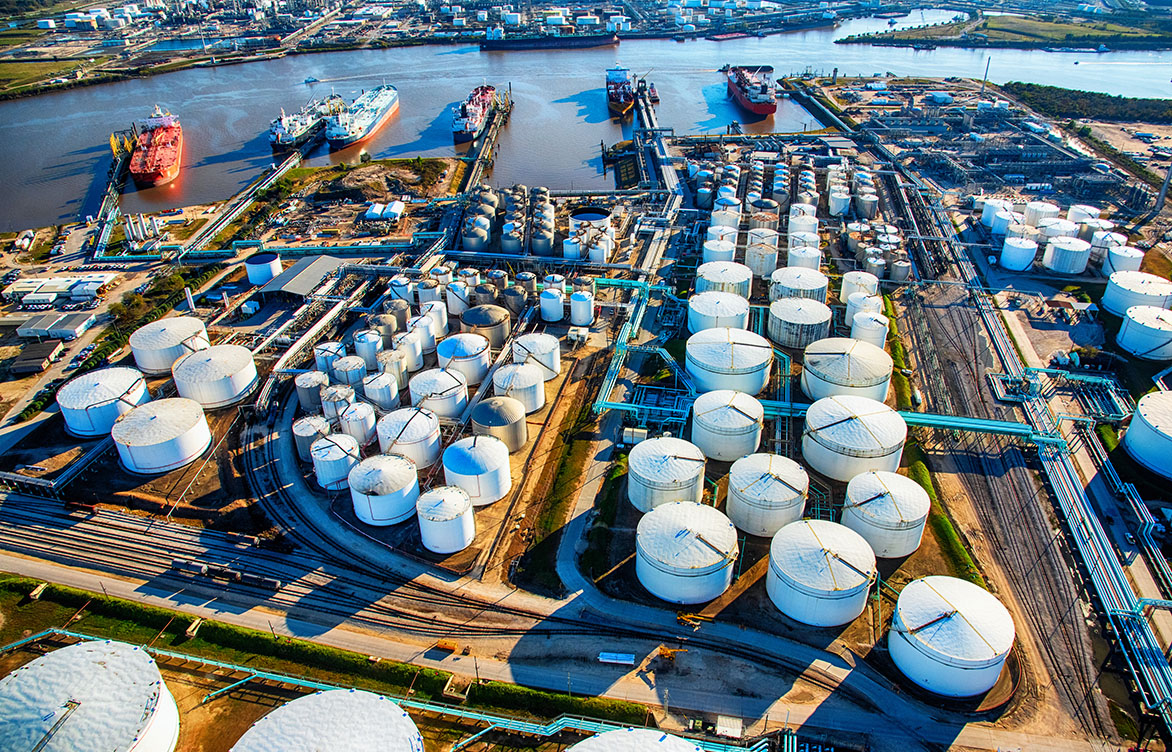
Navigating the storm: Effectively managing industrial stormwater
“Rain is a good thing,” country music sensation Luke Bryan belts out in his chart-topping hit. But, as regions across the U.S. and Canada experience more frequent high-intensity, short-duration storm events, industrial facilities are feeling the effects of too much of a good thing.
Overwhelmed stormwater infrastructure. Unsafe working conditions. Prolonged flooding. Commingling of process and non-process (storm) water. Inadequately treated facility discharge. Sound familiar?
If your facility is one of the many built 50-plus years ago, you’re likely dealing with these intense weather events. Older facilities simply weren’t built to capture the substantial amount of runoff we’re seeing today. And while it’s likely not feasible to overhaul your entire stormwater management system, there are effective solutions to keep your facility operating at its peak when a storm rolls in.
Practical solutions to survive the storm
For six decades, we’ve worked with clients to find solutions to their water-related challenges. We’ve been on site to observe the industrial stormwater management challenges our clients are facing, we’ve stayed on top of technological advancements and regulatory guidance, and we’ve personally invested our time and energy in developing creative, practical, and lasting solutions. Increasingly, clients are looking at stormwater management through the lens of sustainability, environmental impact, and improving their bottom line. So, we also work with them to design and permit systems that will treat stormwater and reuse it as process water.
A water balance model provides a big-picture view of a facility’s water inputs and outflows.
Our industrial stormwater management team includes hydrologic, hydraulic, and water quality modelers and analysts; NPDES permitting and compliance experts; data quality and management analysts; geographic information system (GIS) mappers; civil designers and evaluators; operations and maintenance system specialists; and more.
When clients come to us with stormwater management issues, we assess which areas of their facility are experiencing problems, how frequently, and to what severity. Then, we develop a water balance model, a big-picture view of the facility’s water inputs and outflows.
But first, let’s look at two of the driving forces impacting facilities today: aging infrastructure and regulatory compliance.
Aging infrastructure
Has the footprint of your facility grown over time? Has your stormwater conveyance and management infrastructure (including channels, culverts, collection systems, lagoons, pumps, etc.) grown with it? If not, your stormwater management infrastructure is likely unable to handle the additional runoff generated by your expanding facility. And, if your facility is like many others, drainage and stormwater may have just been an afterthought from the onset, even when located adjacent to or near a body of water in a low-lying area.
At older refineries, process sewers originally constructed to convey process wastewater to the treatment unit now are used to carry stormwater, too. The result? Overflow downstream, a backwater effect upstream, prolonged duration of inundation pool (flooding) onsite, and overwhelmed treatment facilities downstream.
Our industrial stormwater management team will take all these complexities into consideration when assessing your existing stormwater management infrastructure.
Regulatory compliance
Regulatory compliance for industrial stormwater has evolved. Since 1987, industrial stormwater discharge has been regulated under the Clean Water Act, which prohibits the discharge of pollutants through a point source into U.S. waters unless a National Pollutant Discharge Elimination System (NPDES) permit is obtained. NPDES permits (or their state equivalent) establish conditions on discharges to surface water that are necessary to protect water quality and designated uses of the waterbody. Conditions that apply to stormwater discharge can include:
-
Establishing best management practices (BMPs) to control pollutants in stormwater
-
Developing stormwater pollution prevention plans (SWPPPs) to provide an overall framework for routine inspection and evaluation of BMPs
-
Using benchmark values to gauge performance of BMPs
-
Numeric effluent limits
Our NPDES permitting and compliance experts will work with you to establish or update BMPs tailored to your facility, develop or revise your SWPPPs, and assist in the NPDES permitting process.
Water balance: A valuable discovery tool
Let’s circle back to the first step toward a solution: understanding your facility’s water balance. Water balance informs the offsite flow coming into and impacting your site (if any), system losses, how onsite stormwater runoff moves through your facility’s stormwater infrastructure to its ultimate outfall location, the existing process sewer network, and the corresponding water quality throughout the system. We determine your site’s water balance using existing plant data, record drawings, and additional data collection, as needed, to develop either a one-dimensional (1D) or quasi two-dimensional (2D) hydrodynamic model of your facility.
A system water balance model can be a valuable tool to inform site improvements that account for your facility’s risk tolerance, economics, and regulatory requirements.
A system water balance model can be a valuable tool to inform site improvements that account for your facility’s risk tolerance, economics, and regulatory requirements.
For example, adding a large stormwater pump to your site may not be feasible due to power availability and cost limitations, but strategically adding temporary, smaller-capacity trash pumps and making minor improvements to your existing conveyance system may be an alternative solution to manage smaller storm events.
Your water balance model can also help you:
-
Plan future development
-
Simulate different scenarios to assist with facility infrastructure operation
-
Inform impacts of proposed development on existing stormwater and wastewater infrastructure
-
Integrate best management practices and aid in permit compliance
Putting this approach into action
We put this approach into action at a refinery with aging infrastructure, frequent onsite flooding, undersized wastewater treatment system, and subsequent undesirable overflows at downstream locations. To better understand the overall stormwater and process wastewater generated at the refinery, Barr reviewed record drawings and site information data, performed site-specific surveys, and conducted site visits to learn more from staff. We used this information to develop a comprehensive system water balance model—calibrated using observed rainfall events and simulated synthetic rainfall-runoff events—that clearly identified the system’s bottlenecks. We then gathered client input on risk tolerance, reviewed the regulatory framework based on existing discharge permits, and discussed economics.
Using this data, our team developed a series of short- and long-term solutions to improve stormwater conveyance and management, process wastewater treatment, and discharge through the outfall location. Armed with a system water balance model, the facility is better equipped to handle future storm events. And, when it comes time to plan future site developments, the system water balance model will be taken into account for facility stormwater management.
Ready to assess your existing stormwater management system?
While your facility may not have the budget or space to meet today’s stormwater management requirements for new facilities, a water balance model can help uncover smaller, lower-cost solutions to mitigate issues within the existing space. These solutions can help your site remain in operation during storm events while improving operator safety, maintain compliance by limiting stormwater overflow, and provide a better understanding of how future proposed developments onsite will impact existing stormwater infrastructure. Contact us to get ahead of the storm and learn more about our industrial stormwater management services.
About the author
Mandar Nangare, senior water resources engineer, has more than 18 years of experience in water resources engineering, specifically on projects involving surface water and stormwater. His areas of interest and expertise are water resources systems and the integration of surface-water and groundwater systems for sustainable solutions, specifically the application of optimization, risk, reliability, and uncertainty analysis to a water resources problem using the systems approach.
Related project
Floodproofing of utility switchyard
Montana-Dakota Utilities’ (MDU) Heskett Station is adjacent to the Missouri River in Morton County, North Dakota. Due to several factors—the facility’s age, a high groundwater table, the absence of a positive drainage gradient toward a natural outfall, and the insufficient conveyance capacity of existing drainage infrastructure—rainfall and snowmelt frequently flooded the plant’s 115 kW switchyard. Because the floods created standing water adjacent to energized transformers, the situation posed a safety risk. Barr developed six options representing a range of implementation scenarios and costs to address the flooding issue. Working with facility staff and operators, MDU’s project manager chose the design that best accommodated workers’ needs and the utility’s budget.


